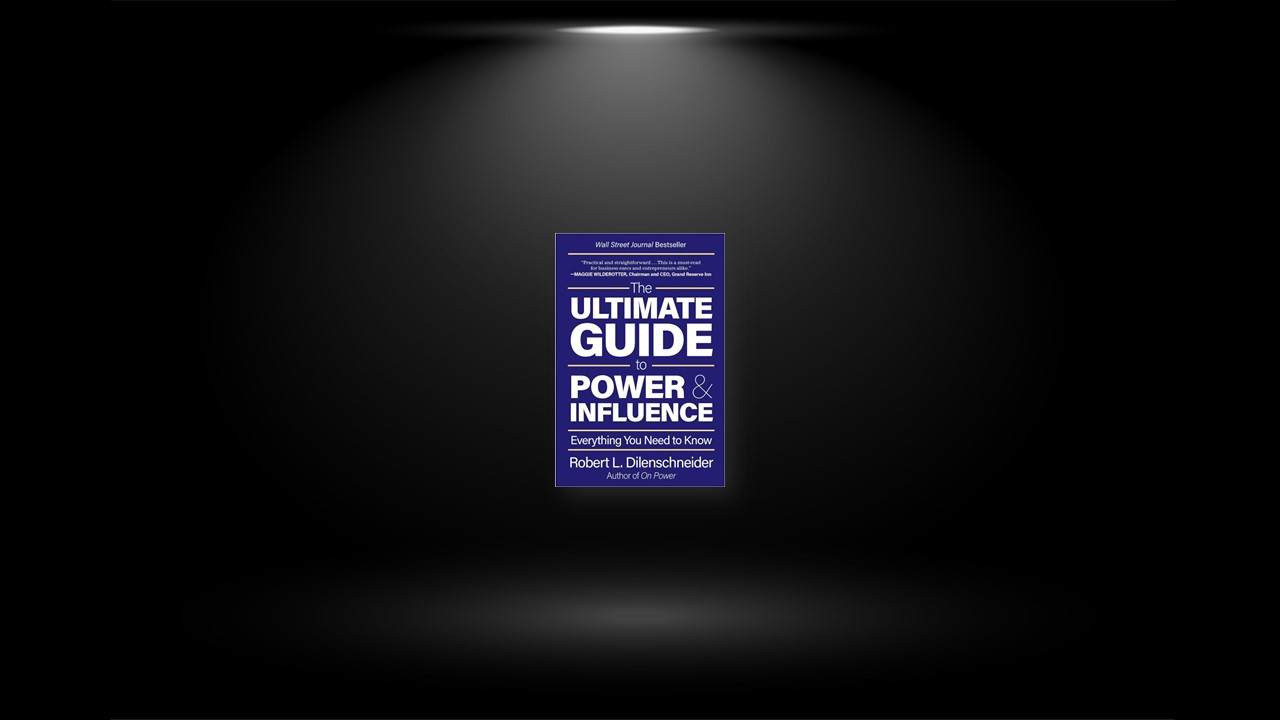Taking First Steps Critical to Your Future
It is important to know who you are and where you want to go—at any age or stage of your career. So, what do you stand for? What risks are you willing to take?
The answers will be—and should be—different for each of us. The answers will lead you to knowing and making the most of your life and your leadership style. A crucial component of being an influential leader is authenticity. You have to be honest almost to a fault. If you’re not honest with yourself, it’s going to be a big problem.
Jack Welch, the storied CEO of General Electric (GE), knew he was different from most CEOs. The title of one of his bestsellers, Jack: Straight from the Gut, makes that clear. No artifice. He knew who he was and was true to himself, even if that seemed unconventional for a CEO.
He encouraged people to take risks, chances. If the outside world was changing faster than the company was, failure was certain, he believed. There was no standing still, even for a public corporation paying healthy stock dividends. Though GE was one of the most successful corporations at the time, Welch took a risk and set up GE Capital under Gary Wendt, one of the best executives in the company. GE Capital went on to become one of the most important financial institutions in the world. Welch didn’t try to be like any other figure. He was himself; he was authentic, like him or not. He was successful.
Networking: You Have to Do It
think of networking in terms of “favor banks”—coined by Tom Wolfe in his novel The Bonfire of the Vanities. The book is satire, but Wolfe’s point about favor banks remains illustrative. It captures an essential element in how the world of influence works.
“It’s an efficient and time-worn system,” writes Spetner. “It’s also one of the most effective engines for advancing a career.” Here’s how it works: You make a “deposit” into the virtual favor bank, and later you will inevitably make a “withdrawal.” When you make that withdrawal, it’s important to do so elegantly and graciously so that everyone wins.
Let’s say you’re called to assess a candidate for a senior management job at an up-and-coming manufacturing firm. You provide a strong recommendation and are told she’s at the top of the list. Fine. Now leverage that by immediately calling the candidate and telling her she’s likely to get the job. Who do you suppose the candidate will think helped cinch the position?
Get credit for your favors this way. Look for favors you can do. Continually pay attention to both sides of the ledger. Constantly look for favors that don’t cost you anything. Who are the powerful people who feel antagonistic toward your business? The author is talking about special-interest leaders, columnists, politicians—anyone who can be a big-league aggravation. It may sound counterintuitive, but without undermining your business objectives or compromising ethics, do every possible favor you can for those people. It’s done every day by top managers in the Fortune 500. Deposit regularly and heavily in the favor bank.
Figure out realistically whom you need and who needs you. Every time you confront a problem or launch a program, create an agenda for change. Next to each point, mark down which of the people who need you who could help make that change or resolution easier, more effective, or less expensive. People will do plenty for you. Most will even do it without a fee if you make two things clear: you don’t intend to pay a fee for the service, and you really appreciate what they are doing. The favor must be reasonable, of course.
The Right Way to Make Your Mistakes
People make mistakes; however, the biggest mistake is failing to learn from them. George Bernard Shaw once admonished: “Success does not consist in never making mistakes but in never making the same one a second time.” To extract the most learning from your mistakes, first consider how you talk to yourself about them. Do you wallow in self-recriminations? Do you amplify the negativity? That can be self-defeating and make you too cautious to stretch again.
Henry Ford memorably expressed it this way: “The man who thinks he can and the man who thinks he can’t are both right.” Oprah Winfrey was once “down there in the hole,” as she puts it. After she started OWN, the Oprah Winfrey Network, in 2011, ratings, well, stunk—and she was losing money.
“Now when you’re down there in the hole, it looks like failure,” she said in her commencement speech at Harvard University in 2013. “When that moment comes, it’s really okay to feel bad for a little while. Give yourself time to mourn what you think you may have lost—but then, here’s the key: learn from every mistake because every experience, encounter, and particularly your mistakes are there to teach you and force you into being more who you are.”
Within a year, the basic cable network was profitable. When it comes to your mistakes, look realistically at what went wrong. Could it have been anticipated? Could it have been prevented? What could you or your team or your company have done differently? Sometimes from this sort of clear-eyed examination comes the kernel of another idea. The original idea may have failed, but from it can spring something even better.
Protect Yourself and Your Reputation
List your vulnerabilities, figure out what they are, and then take steps to reduce them. But sometimes, it just may not be possible because of bad decisions you made along the way.
Bill Gates, a founder of Microsoft and one of the richest people in the world, presumably had it all. He was on top. He and his wife, Melinda French Gates, had formed a foundation to use their philanthropy for immense good in fields such as health care and education. But in 2021, Melinda filed for divorce, shocking many—and then the sordid details came out.
Bill confessed publicly that he’d had an affair with a Microsoft staffer years earlier. He apologized for hurting his wife and family. Of course, he had to come clean and try to take control of the narrative. But his reputation was sullied.
Is there more he should have done? You bet. He could have made a statement for all others who find themselves in situations like this, for one. Once you realize things have changed, take stock of yourself. Deal with the various elements that shape your life. The issue of respect is important. Always speak well of other people. Anything negative you put out will come back to bite you.
It is important to have a good lawyer you can trust, a good doctor who will pay attention to you, and an investment advisor. Someone serious to move you in the right direction and not just put your money at risk. Ask your lawyer, your doctor, your investment advisor a pointed question. See how they respond and how much time it takes for them to get back to you. You need good people around you. But sometimes you have no choice but to deal with the wrong people.
Predicting Trends: Your Key to Keeping Power
“You can accurately predict enough of the future to make all the difference. In fact, you can hone your ability to trigger a burst of accurate insight about the future and use it to produce a new and radically different way of doing things,” writes author and futurist Daniel Burrus. “Called a flash foresight, this is about looking into the future and transforming it into a new paradigm for solving ‘impossible’ problems, unearthing ‘invisible’ opportunities, and running extraordinarily successful businesses in the twenty-first century.”
Sounds good, right? Here are some tools to get you there. Look at hard trends, not just cyclical changes. An example of a hard trend might be that people are having fewer children. (The US birth rate fell by 4 percent from 2019 to 2020, the Centers for Disease Control and Prevention reported, the sharpest single-year decline in almost fifty years and the lowest number of births since 1979.)2
Consider what the hard trends mean for what will—not just might—be needed. How can you and your company adapt? What kind of organization can you form to meet the upcoming consequences and beat your competitors?
Lee Iacocca, the head of Chrysler, saw that baby boomers were an untapped market for a new type of vehicle they didn’t know yet wanted. The company had been struggling financially, and the US government had guaranteed a $1.5 billion loan. Iacocca designated nearly half of that amount for the project, and in November of 1983, the Dodge Caravan was introduced—the first minivan and an entirely new category of personal transport.
Early ads described the Caravan as “one vehicle that takes the place of an economy car, sporty car, station wagon, and van.” The Caravan was an immediate success, and Chrysler was on top of the market for a solid fifteen years. But tastes and sensibilities—and consumers’ penchant for something different—led Chrysler (now known as Fiat Chrysler) to discontinue the Grand Caravan line in 2020. SUVs replaced them in the market, and now hybrid and electric vehicles are poised to revolutionize transportation.
Although predicting trends could rely on trying to anticipate what isn’t invented yet, you can also think counterintuitively and look back. “If you want to know what the trends of tomorrow will look like, then you should study up on the trends of yesterday. Trends work as a chain reaction in a way,” Melissa South, senior vice president for the retailer SwingTie, suggested in an Enterprise League article. “When popular things randomly disappear, you cannot expect them to stay gone forever. Nostalgia is a strong tool that everyone should keep their eyes on. If you notice something fading away, remember that people once loved it, and over time that love can come back again.”


